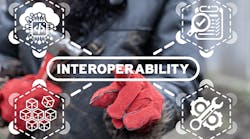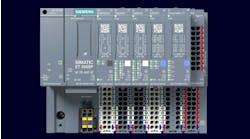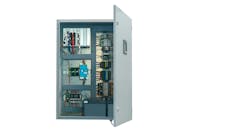I split my professional time between creating new control designs for a very large inventory of aged equipment in need of a complete electrical reboot and planning/executing new production lines and equipment purchases to augment our various production endeavors.
Balancing the two full-time spouses—let’s face it, most of us are married to the job in some format—is somewhat of a challenge made even more difficult by the challenges we currently face. Couple that with the arrival, somewhat late this year, of spring and the promise of longer days to bring us out of the shroud we have been living under, and we have a perfect storm.
Also read: How does I/O termination affect protocol choice?
Automation is a much more exhilarating ride than it has been. Short supply lines and even shorter employee ranks have put a lot of pressure on machine builders to fill in the void left by a pandemic that is too slow in leaving.
Adding to the usual stressors, the dwindling supply of regularly stocked items at automation vendors and distributors has created a whole new level of crazy that we are being asked to navigate as we strive to keep deadlines. Like it or not, it is open season on automation, and there is no wrong way to weather the storm.
We are right in the middle of an equipment installation at my place of employment, and a great piece of technology caught my eye in the middle of a stressful situation.
Most of our equipment is small in footprint. While the whole production line can take up some real estate, the individual pieces tend to be complete packages that work perfectly well on their own. The exception to the rule is the end-of-line palletizers that we use for multiple high-speed lines and lines where the products are too heavy for the usual workhorse, the collaborative robot.
Conventional palletizers have been around for a long time, and the biggest challenge about this type of equipment is that it is big enough to walk around inside.
Safety is of the utmost concern, and finding appropriate ways to protect every part of a large-format packaging machine is always a challenge. Even more challenging is a machine where one doesn’t want to shut down the entire package when one part of it needs attention.
Production lines need to keep producing, and that means breaking up the machine functions into manageable pieces but keeping the safety of the entire package intact. This sort of challenge is aptly suited to a safety controller.
In the press of getting this new palletizer installed, I didn’t have as much time with the vendor during the installation as I might have wanted. My first chance to get intimately involved with the control system happened the week after the tech had already returned home to the west coast.
As things sometimes go, I attempted to get a few final integration features in place and found that I couldn’t reset the safety circuit. I started where every troubleshooting journey begins, with the electrical schematics. The operator screen told me what doors were unable to reset, and the drawings told me how it was all connected.
At the heart of the safety circuit was a safety controller that I hadn’t run into before. Unlike that safety system that used an IO-Link type of approach to safety devices, this safety controller actually uses IO-Link as the method of connection. Each zone of the palletizer had machine-mounted devices that came back to an IO-Link master in the safety controller chassis.
Without a means to connect to the safety controller for troubleshooting—I made a wrong turn when trying to download the software and didn’t realize my mistake until well after the troubleshooting adventure began—I was able to use the modules in the controller architecture to quickly verify the status of the devices in each of the zones in question simply by looking at the status lights and matching them to the schematics.
What didn’t happen quickly was discovering that the doors have a manual override feature using a three-sided key to open doors when electricity isn’t present on the machine, but that is another story. Apparently teaching an old dog new tricks will always be the default action when I am involved.
I wanted to talk about this new-to-me safety controller because it addresses an issue I have always seen with the concept of IO-Link. I will readily say that I am a fan of IO-Link, but my concern has always been about what to do with the wealth of information that is available in the IO-Link master.
In the Industrial Internet of Things (IIoT), having information isn’t the same as doing something with it. I have always seen this as something that the controls/software designer would have to undertake, and, with my busy life, I didn’t relish the idea of developing the code to support this great source of information.
This particular vendor has leveraged the two-way link between master and slave to not only complete the safety circuit but also monitor the devices, all in a package that is mostly pictorial in nature.
The software environment is free to download and very easy to use. While I didn’t have to create the safety algorithm, it was easy to understand and provided a great means to troubleshoot the circuit to confirm my old-school status lights and schematics attempt to figure out the issue.
There is an old saying—necessity is the mother of invention—and never has this been truer than the situation we find ourselves in these days. The struggles with supply lines, particularly automation-component supply lines, has forced us to look at alternate sources of components.
Happily, the good, determined work of some folks that came before us has led to a more global approach to automation, and that has reduced the multitude of control networks down to a few that, coupled with open architecture, means we can combine dissimilar manufacturers in a control design with very successful results.
There was a time, not so long ago, where this just wouldn’t be the case. I well remember the inter-brand arguments about this whole concept of open architecture. Controller X must use Module X with Sensor X on Network X. The suggestion of using Sensor Y with Module X would make blood boil.
When times are good and lots of product is stocking the shelves, the need to mix and match brands may not seem like a desired course of action, but if there is something we have learned over the past three years, it is that we have to keep an open mind and avoid the knee-jerk reaction that, if we can’t find our favorite Brand X components, then we can’t get the job done.
Happily, there is light at the end of the tunnel. While not completely out of the water just yet, there are clear signs that manufacturing is getting back in gear, and we will soon see our favorite parts back on the shelves.
One thing we should all keep in mind are the paths we went down to give our designs life over the course of this long challenge. Personally, I have found many products out in the marketplace that are as good as or, in some cases, better than the name-brand products that I am accustomed to choosing for my designs.
One thing I hope comes out of this situation is a healthy reboot of competition. Name brands can tend to create such an umbrella over the landscape that we lose sight of the other products that are available.
I find myself seriously challenging the status quo and feel like I need to qualify some of my choices of components to make sure that I am putting the best products in my designs.
Declare an open season on your automation plans, and you might be pleasantly surprised by what you find out there.






